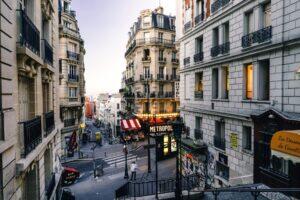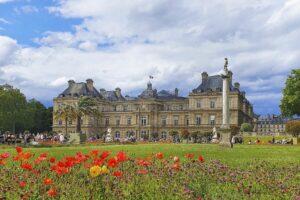Fodor's Expert Review Musée Jacquemart-André

Among the city's best small museums, the opulent Musée Jacquemart-André is home to a huge collection of art and furnishings lovingly assembled in the late 19th century by banking heir Edouard André and his artist wife, Nélie Jacquemart, when this was their home. Their midlife marriage in 1881 raised eyebrows—he was a dashing bachelor and a Protestant, and she, no great beauty, hailed from a modest Catholic family. Still, theirs was a happy union fused by a common passion for art. For six months every year, the couple traveled, most often to Italy, where they hunted down works from the Renaissance, their preferred period. Their collection also includes French painters Fragonard, Jacques-Louis David, and François Boucher, plus Dutch masters van Dyck and Rembrandt. The Belle Époque mansion itself is a major attraction. The elegant ballroom, equipped with collapsible walls operated by then-state-of-the-art hydraulics, could hold 1,000 guests. The winter garden was a wonder of its... READ MORE
Among the city's best small museums, the opulent Musée Jacquemart-André is home to a huge collection of art and furnishings lovingly assembled in the late 19th century by banking heir Edouard André and his artist wife, Nélie Jacquemart, when this was their home. Their midlife marriage in 1881 raised eyebrows—he was a dashing bachelor and a Protestant, and she, no great beauty, hailed from a modest Catholic family. Still, theirs was a happy union fused by a common passion for art. For six months every year, the couple traveled, most often to Italy, where they hunted down works from the Renaissance, their preferred period. Their collection also includes French painters Fragonard, Jacques-Louis David, and François Boucher, plus Dutch masters van Dyck and Rembrandt. The Belle Époque mansion itself is a major attraction. The elegant ballroom, equipped with collapsible walls operated by then-state-of-the-art hydraulics, could hold 1,000 guests. The winter garden was a wonder of its day, spilling into the fumoir, where André would share cigars with the grands hommes (important men) of the time. You can tour the separate bedrooms—his in dusty pink, hers in pale yellow. The former dining room, now an elegant café, features a ceiling by Tiepolo. Don't forget to pick up the free audio guide in English, and do inquire about the current temporary exhibition, which is usually top-notch. Plan on a Sunday visit, and enjoy the popular brunch (€32) in the café from 11 am to 2:30 pm. Reservations are not accepted, so come early or late to avoid waiting in line.
READ LESS








